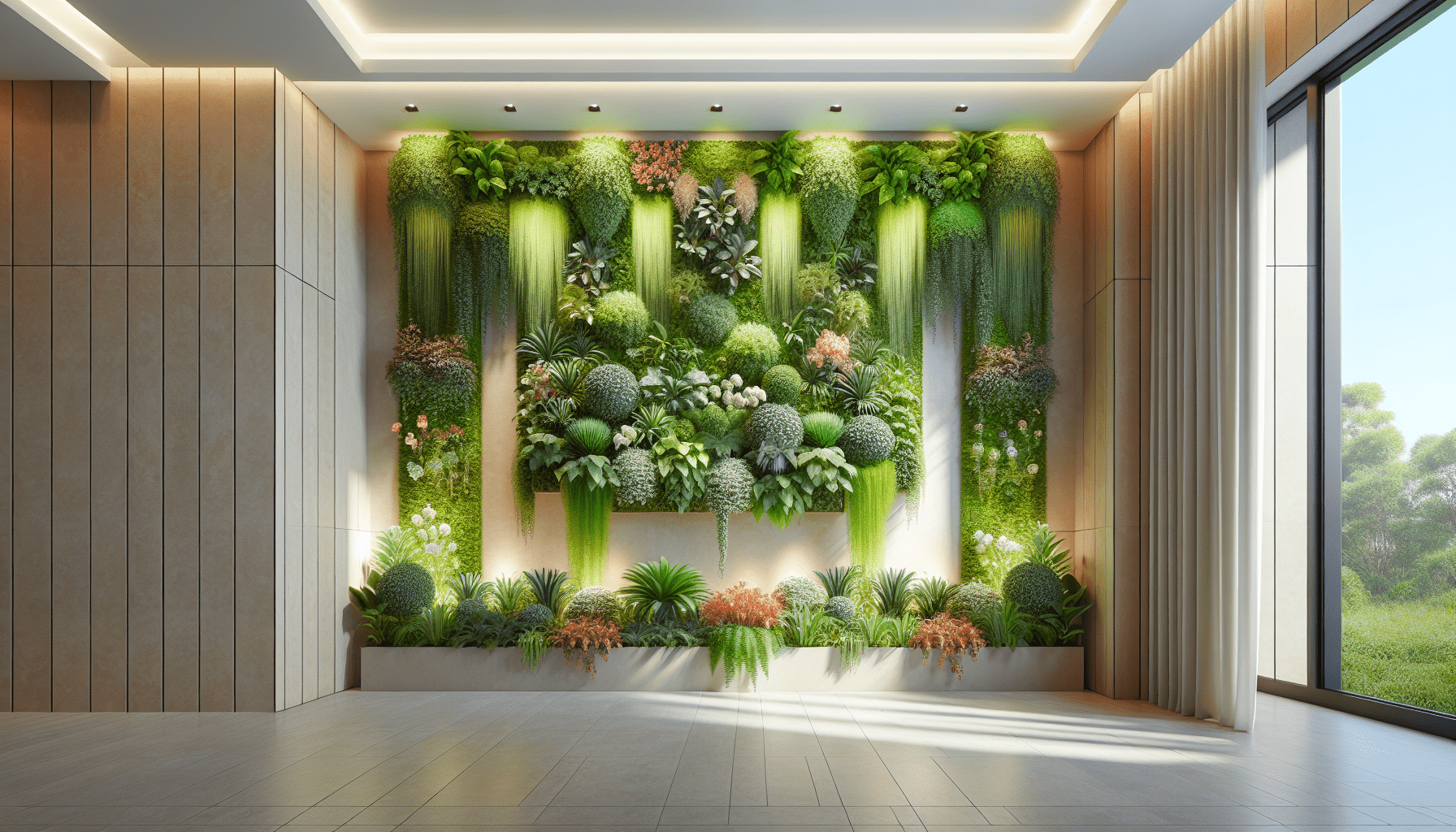How To Grow A Vertical Garden Indoors

Welcome to the world of indoor vertical gardening, where you can transform your home into a green oasis regardless of space constraints! In "How To Grow A Vertical Garden Indoors," you'll discover the essential steps to create a thriving vertical garden that not only adds beauty to your living space but also improves air quality and brings a touch of nature inside. From selecting the right plants and materials to designing and maintaining your vertical garden, this guide will equip you with all the knowledge you need to start your own lush, indoor paradise. Get ready to unleash your inner gardener and bring life to your home in a new, exciting way! Have you ever wondered how you could bring a touch of nature into your home without taking up too much space? Well, the solution might be simpler than you think: a vertical garden!
Growing a vertical garden indoors can be a fun and rewarding way to decorate your living space, improve your air quality, and even grow some of your own food. The idea of an indoor vertical garden might seem daunting at first, but don’t worry – with a little guidance and some basic know-how, you'll be well on your way to creating your own green oasis.
What is a Vertical Garden?
Before we dive into the how-to's, let's first understand what a vertical garden is. Essentially, it's a garden where plants grow on a vertical surface, such as a wall or a specially designed structure. This type of gardening maximizes space and can be a fantastic option for small apartments, homes with limited outdoor space, or for anyone looking to add a unique aesthetic to their interior decor.
Benefits of a Vertical GardenVertical gardens offer numerous benefits:
- Space Efficiency: Perfect for small spaces.- Aesthetics: Adds a unique and stylish element to your home.
- Improved Air Quality: Plants can help filter and clean the air.
- Mental Well-being: Gardening can be therapeutic and reduce stress.
- Wall-mounted Planters or Shelves: These will serve as the structure for your vertical garden.
- Potting Soil: Essential for planting.
- Plants: Choose varieties suited to your light conditions and personal preferences.
- Watering Can or Spray Bottle: For regular watering.
- Drip Irrigation System (optional): Can make watering easier and more consistent.
- Measuring Tape: To ensure even spacing and sizing.
- Level: To make sure your planters or shelves are installed straight.
- Screwdriver or Drill: For mounting planters or shelves.
- Pruners or Scissors: For maintaining plant health.
- Spider Plant: Tolerant of low light and irregular watering.
- Philodendron: Thrives in low to medium light and can survive some neglect.
- Snake Plant: Requires minimal water and can handle low light conditions.
- Basil: Requires full sun and regular watering.
- Mint: Grows well in partial sun and likes moist soil.
- Thyme: Needs full sun and well-drained soil.
- Begonias: Prefer partial sun and well-drained soil.
- African Violets: Thrive in indirect sunlight and need moderate watering.
- Peace Lily: Ideal for low light conditions and requires regular watering.
Care and Maintenance Tips
An indoor vertical garden is not "set it and forget it." Regular care and maintenance are essential to ensure your plants stay healthy and vibrant.
WateringThe frequency of watering will depend on the plants you’ve chosen and the environment in your home. A good rule of thumb is to check the soil moisture regularly and water when the top inch of soil feels dry to the touch.
PruningRegular pruning helps to maintain the shape and health of your plants. Remove any dead or yellowing leaves to prevent disease and encourage new growth.
FertilizingIndoor plants benefit from occasional feeding. Use a balanced liquid fertilizer every few weeks during the growing season (spring and summer).
Pest ControlIndoor plants can still attract pests like aphids or spider mites. Inspect your plants regularly and use natural remedies or insecticidal soap to deal with infestations.
Common Challenges and Solutions
Like any gardening endeavor, you may encounter some challenges. Here are a few common issues and how to address them:
OverwateringOverwatering is a common mistake and can lead to root rot. Ensure that your planters have proper drainage, and avoid watering on a strict schedule – instead, water as needed.
Insufficient LightIf your plants are not getting enough light, they may become leggy or fail to thrive. Consider using grow lights if natural light is insufficient.
PestsIndoor plants are not immune to pests. Keep an eye out for signs of infestation and treat promptly to prevent the spread.
Nutrient DeficiencyYellowing leaves or stunted growth can indicate a nutrient deficiency. Regular, balanced fertilization can help, but be sure not to overdo it.
Conclusion
Creating a vertical garden indoors is a fantastic way to bring the beauty and benefits of nature into your home environment. Whether you're looking to maximize space, improve your home's air quality, or simply enjoy the therapeutic benefits of gardening, a vertical garden can be the perfect solution.
By carefully selecting your location, gathering the right materials, choosing suitable plants, and maintaining regular care, you can transform any wall or unused space into a lush, green oasis. Remember, the journey of gardening is as enjoyable as the end result – so have fun with the process and watch your vertical garden thrive! Happy gardening!
https://homegardenadvisor.shop/how-to-grow-a-vertical-garden-indoors/



Comments
Post a Comment